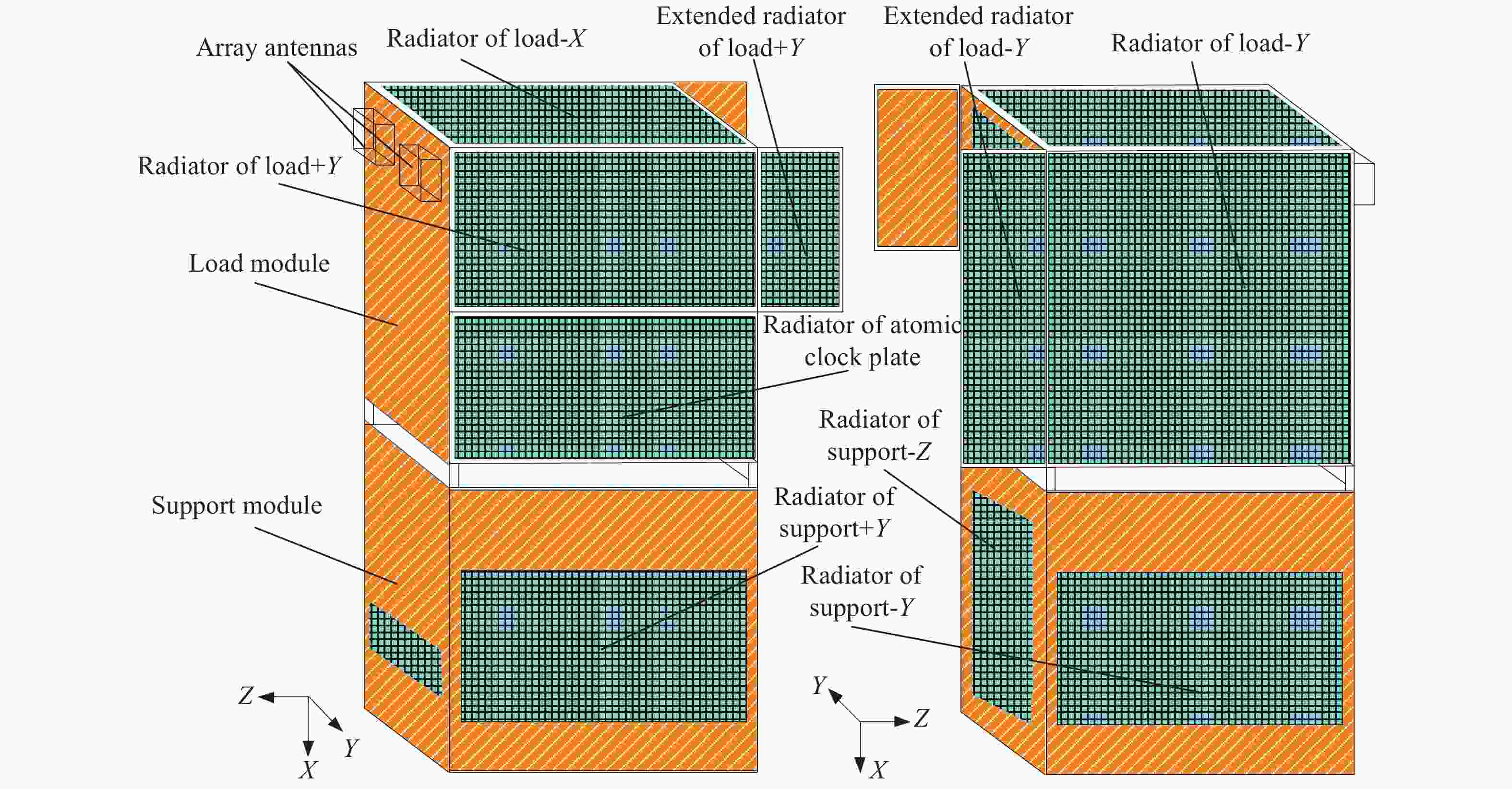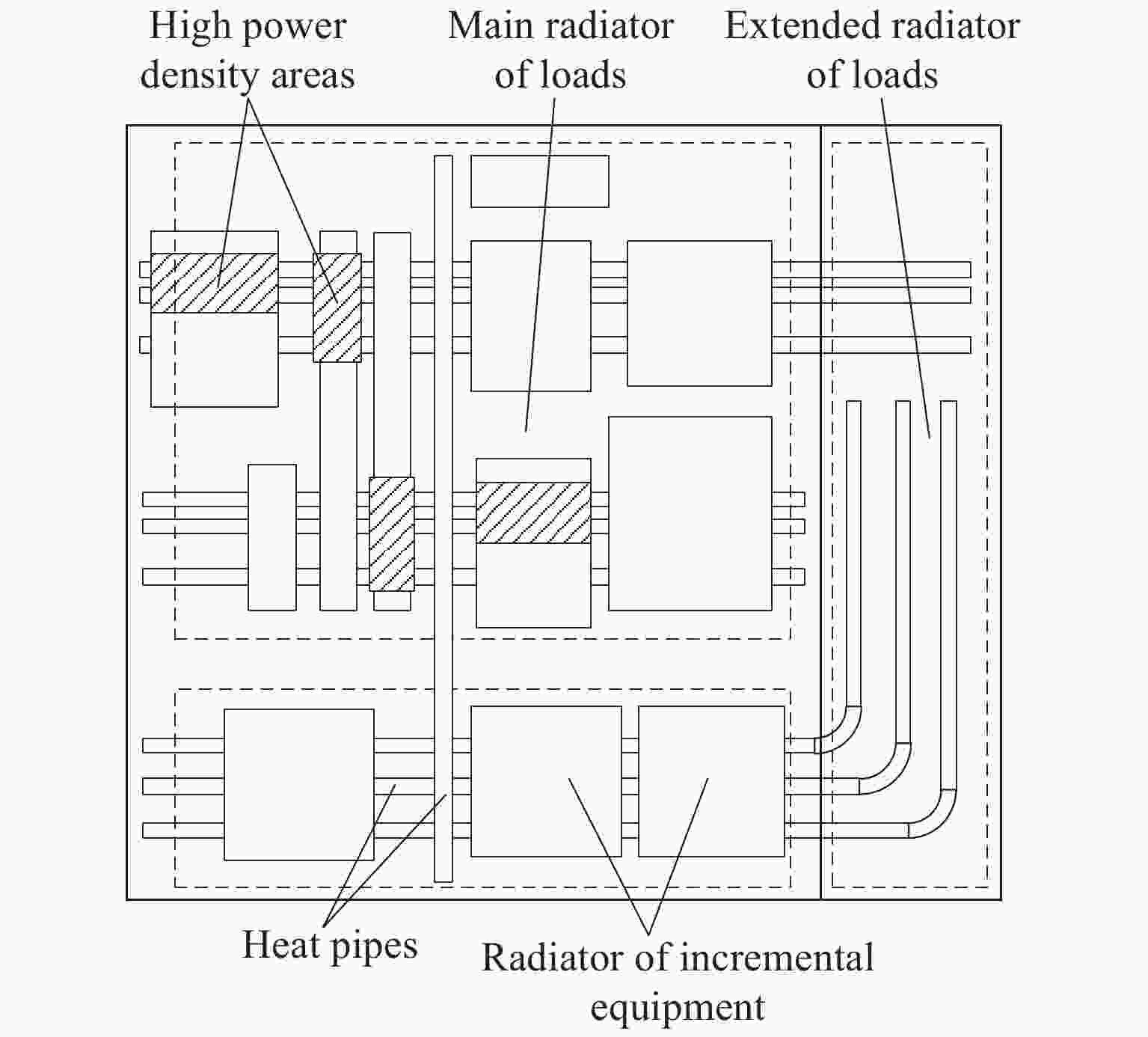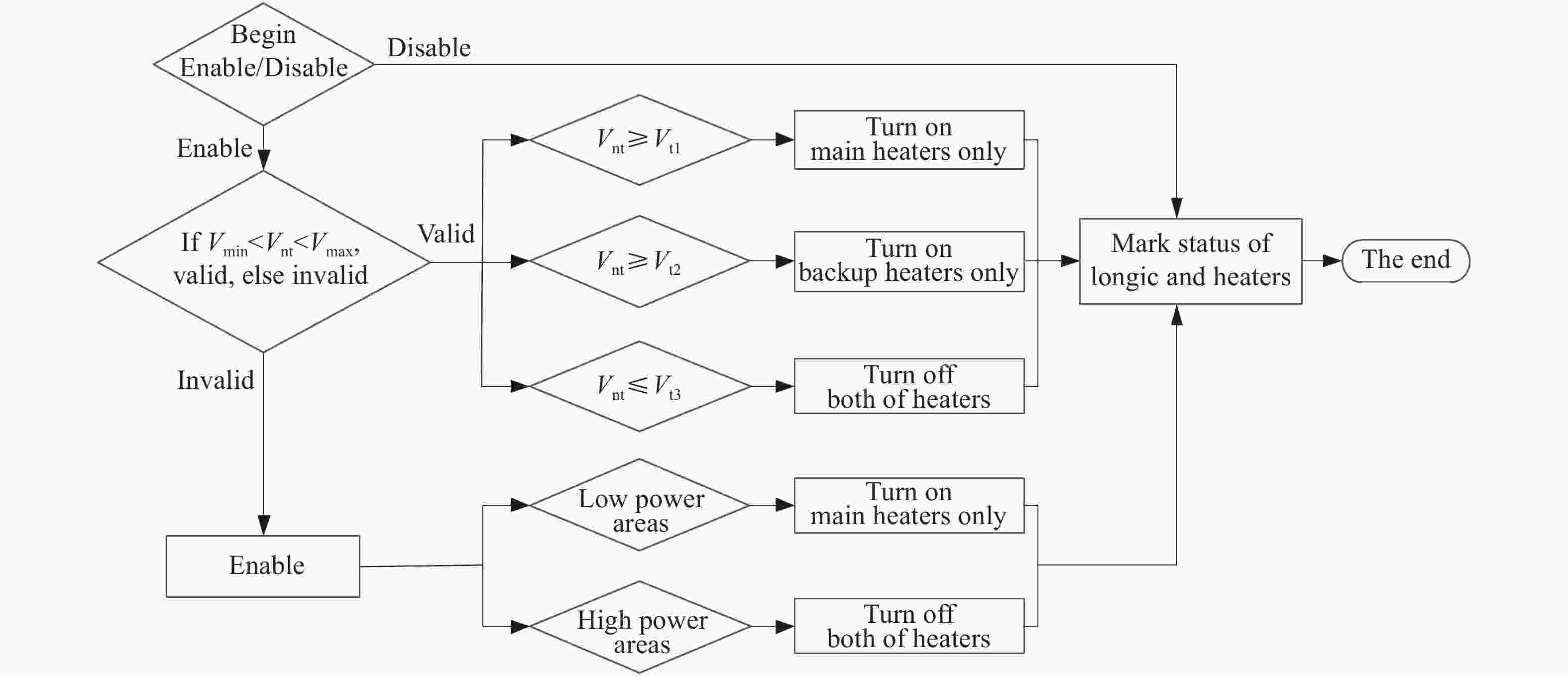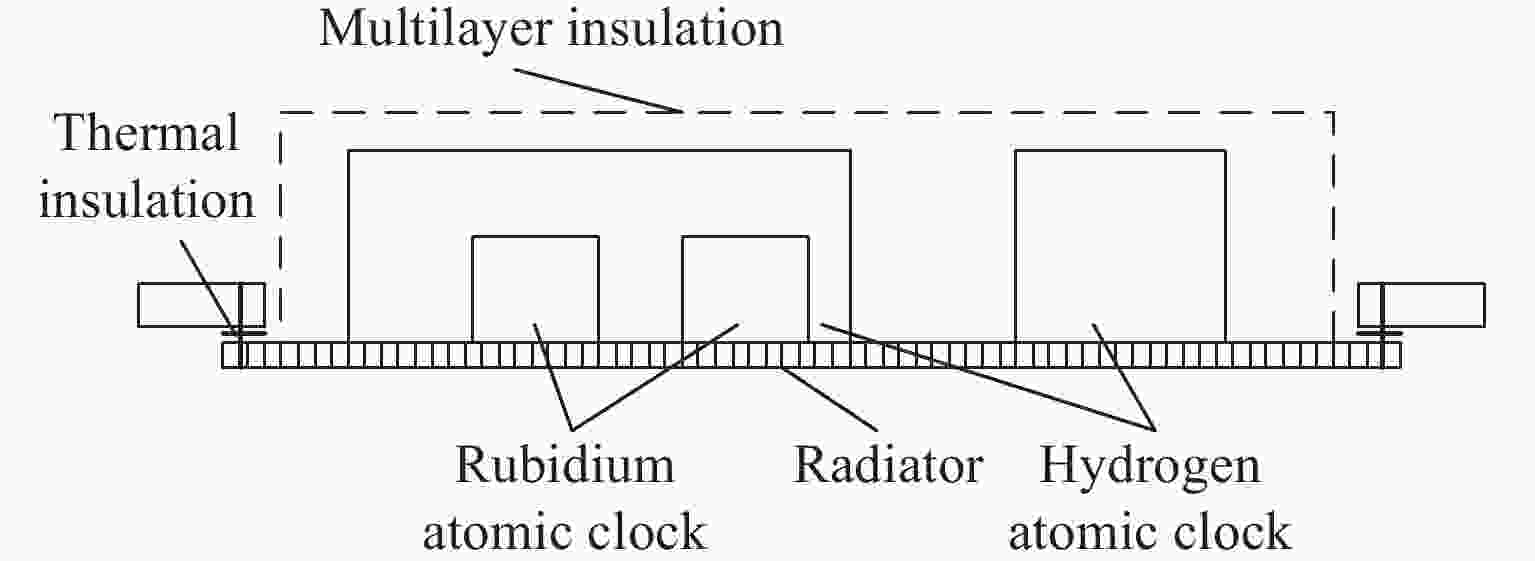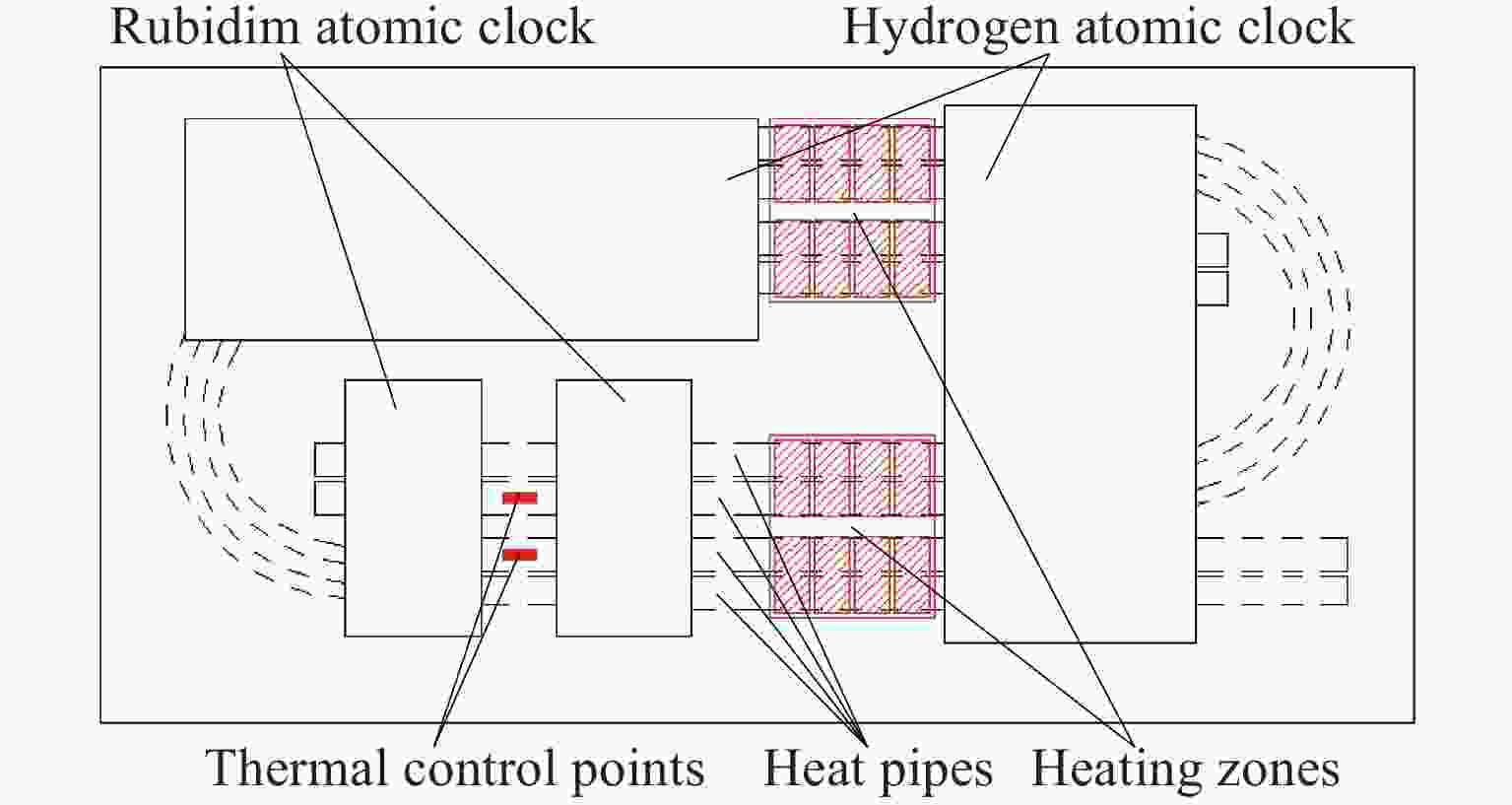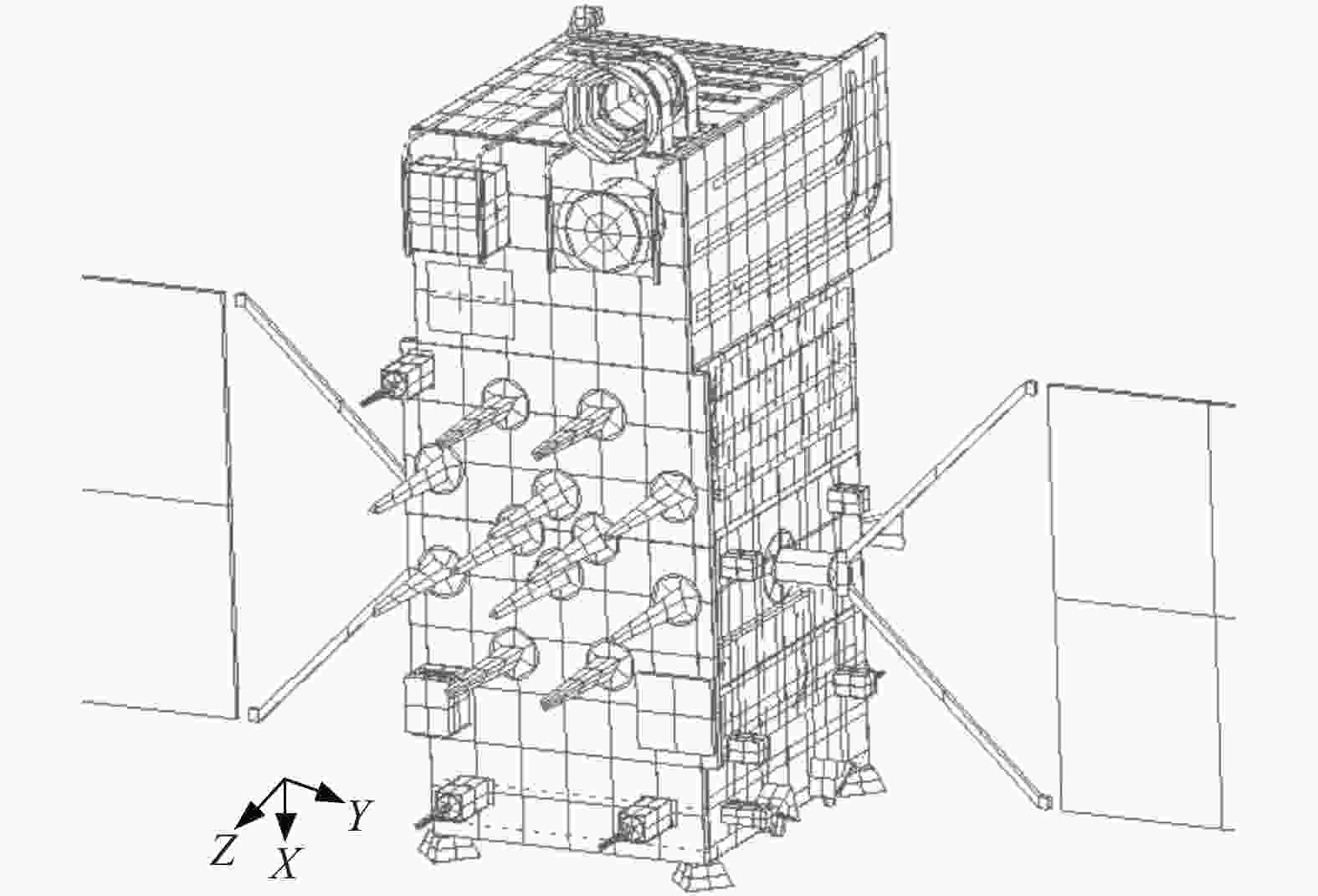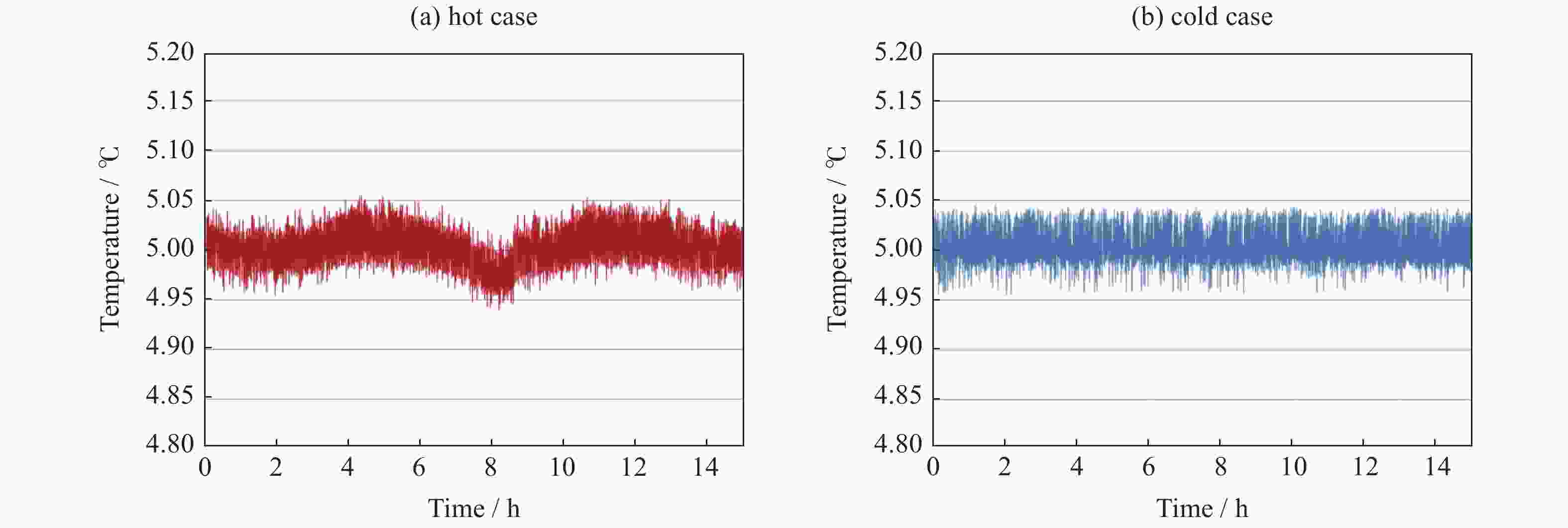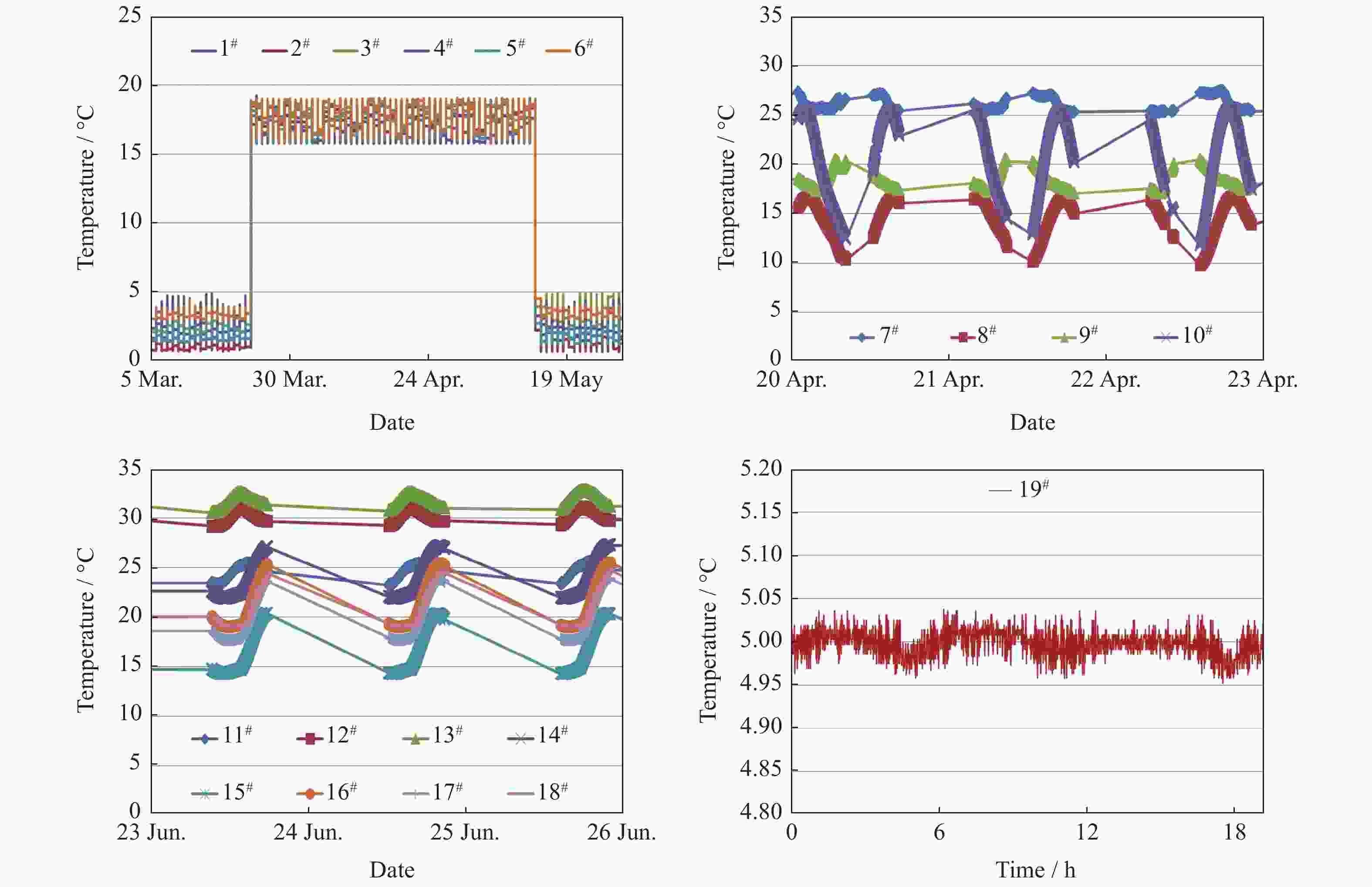Thermal Control Design and Validated for MEO Navigation Satellites
-
摘要:
为解决MEO导航卫星整星热控设计以及有特殊温控指标要求设备的温度控制问题,结合卫星构型、轨道姿态、工作模式等特点,采用被动散热、扩热及局部隔热的热控措施,辅以开关或高精度比例控温算法分级主动热控设计原则。针对载荷大功率设备和相控阵天线,采用热管网络结合扩展散热区的热控措施;针对有温度敏感指标要求的蓄电池组、原子钟等采用隔热措施,辅以主动热控进行独立控温设计;热控软件设计采用在轨自主故障诊断及自动隔离设计方法,显著提升热控系统在轨自主运行能力。经过地面整星级热平衡试验验证及优化设计,在轨多颗卫星的飞行数据表明:整星热控方案设计合理,星上各仪器设备温度满足要求,温度设计余量及变化趋势符合预期。
Abstract:In consideration of the configuration design, orbital attitude, and operation mode of the MEO navigation satellite, both passive and active thermal designs including conduction, diffusion, insulation, switch or proportional control and multistage control strategy are used in the satellite thermal system to satisfy the strict temperature requirements. For high-power payloads and phased array antennas, heat pipe networks along with extended radiators are employed; for temperature-sensitive equipment like battery and atomic clock, thermal insulation along with active control are applied. On-orbit fault diagnosis and automatic isolation designs are utilized in the thermal control software to improve the on-orbit autonomous operation capability. The satellite thermal design is validated by the ground thermal balance test and the performance of satellites in orbit. Validation results illustrate that on-board equipment satisfies temperature requirements, and the design margin and temperature trend lines well with expectation.
-
Key words:
- MEO Satellite /
- Thermal system /
- Thermal design /
- Validated in orbit
-
表 1 星上设备温度指标要求统计表
Table 1. Temperature requirement of equipments in satellite
序号 设备名称 温度指标/℃ 备注 工作温度 储存温度 1 推进系统 +5~+60 +5~+60 – 2 平台电子设备 –15~+50 –20~+50 – 3 蓄电池组 +15~+30 0~+15 阳照区0~+15℃,地影季+15~+30℃,
单体温差≤3℃4 帆板驱动机构 –20~+55 –30~+60 – 5 反作用轮 –5~+50 –20~+55 – 6 磁力矩器 –15~+45 –40~+70 – 7 星敏感器 –30~+50 –55~+60 – 8 载荷电子设备 –10~+45 –40~+70 – 9 行放1/2/3 –20~+60 –40~+70 – 10 固放1/2/3 –25~+50 –40~+70 – 11 相控阵天线 –10~+45 –35~+70 – 12 原子钟 –10~+15 –20~+30 温变速率≤±0.5°C/15 h 13 载荷无源设备 –25~+60 –40~+70 – 14 载荷时频设备 –15~+45 –40~+70 温变速率≤ ±5°C/24 h 表 2 卫星各舱板热耗及散热面积统计
Table 2. Statistical data of heat consumption radiational area
散热区方位 热耗统计/W 散热面积/m2 平台舱+X板 38 — 平台舱+Y板 阳照48/地影72 0.60 平台舱–Y板 阳照101/地影108 0.59 平台舱+Z板 24 0.18 平台舱–Z板 97 0.51 小计 阳照270/地影301 1.88 载荷舱–X板 284 0.95 载荷舱+Y板 主份240/备份220(150) 1.29(0.59) 载荷舱–Y板 主份458/备份413(150) 1.76(0.63) 载荷舱–Z板 156 0.75 小计 主份1138/备份1073(300) 4.55(1.22) 原子钟舱板 65 0.70 表 3 仿真及在轨温度数据分析
Table 3. Temperature data analysis by simulation and in orbit
序号 名称 温度/°C 仿真数据 在轨数据 高温工况 低温工况 6个月 18个月 30个月 1 贮箱 25.1 19.2 19.0 20.8 21.3 2 反作用轮X 33.3 23.2 25.1 28.3 29.6 3 反作用轮Y 33.9 24.5 26.4 29.2 30.7 4 反作用轮Z 34.4 21.9 27.0 30.2 31.5 5 反作用轮S1 36.2 25.0 26.7 29.1 31.2 6 蓄电池组(1#~6#) 16.5 2.4* 3.3* 3.0* 3.5* 7 电源控制器(7#) 29.8 16.1 20.4 23.8 25.4 8 星载计算机(8#) 18.7 10.3 11.8 12.9 13.8 9 主配电器(9#) 25.7 10.5 14.6 17.6 19.2 10 测控固放 25.8 13.5 13.1 16.7 18.6 11 扩频应答机(10#) 29.1 17.0 21.6 23.4 24.3 12 激光电控箱 28.6 15.4 18.5 22.3 23.9 13 固放1(11#) 29.0 5.9* 19.6 21.8 23.4 14 行放1 13.1* 26.3 14.9* 17.1* 18.7* 15 固放2(12#) 35.1 15.2* 24.0 26.5 28.0 16 行放2 19.3* 26.7 13.3* 15.8* 17.2* 17 固放3(13#) 36.4 14.4* 25.0 27.7 29.9 18 行放3 19.9* 27.9 13.2* 15.8* 16.2* 19 激光终端处理机 17.5 6.6 5.3 7.8 9.0 20 相控阵天线(14#) 32.4 17.1 19.6 23.1 25.2 21 完好性监测(15#) 31.1 18.4 18.1 20.4 22.5 22 自主运行单元 29.9 16.4 14.9 17.1 18.7 23 上注接收单元 32.3 18.6 19.0 22.5 24.4 24 导航信号生成单元(16#) 30.5 18.5 18.6 21.8 22.6 25 基频处理单元(17#) 31.0 17.4 20.6 22.6 23.2 26 任务处理级(18#) 28.8 15.5 17.8 20.9 22.5 27 原子钟控温点(19#) 5.03 5.01 5.03 5.03 5.02 注 $* $表示该设备处于储存状态,其余设备处于工作状态。 -
[1] 闵桂荣, 郭舜. 航天器热控制[M]. 北京: 科学出版社, 1998: 376-380MIN Guirong, GUO Shun. Thermal Control of Spacecraft[M]. Beijing: Science Press, 1998: 376-380 [2] 侯增褀, 胡金刚. 航天器热控制技术−原理及其应用[M]. 北京: 中国科学技术出版社, 2007: 473-474HOU Zengqi, HU Jingang. Spacecraft Thermal Control Technology-Fundaments and Application[M]. Beijing: Science and Technology of China Press, 2007: 473-474 [3] 苗建印, 钟奇, 赵啟伟, 等. 航天器热控制技术[M]. 北京: 北京理工大学出版社, 2018: 2-5MIAO Jianyin, ZHONG Qi, ZHAO Qiwei, et al. Spacecraft Thermal Control Technology[M]. Beijing: Beijing Institute of Technology Press, 2018: 2-5 [4] 杨军, 李世光, 徐月青, 等. 环境温度对氢原子钟性能的影响[J]. 测试技术学报, 2014, 28(2): 93-97YANG Jun, LI Shiguang, XU Yueqing, et al. Effect of temperature on hydrogen maser performance[J]. Journal of Test and Measurement Technology, 2014, 28(2): 93-97 [5] 林士峰, 李锴, 蒋桂忠, 等. 导航卫星原子钟舱温度控制方法及其验证[J]. 空间科学学报, 2019, 39(3): 381-387 doi: 10.11728/cjss2019.03.381LIN Shifeng, LI Kai, JIANG Guizhong, et al. Method of temperature control and its validation for atomic clock cabin on navigation satellite[J]. Chinese Journal of Space Science, 2019, 39(3): 381-387 doi: 10.11728/cjss2019.03.381 -
-






 下载:
下载:
